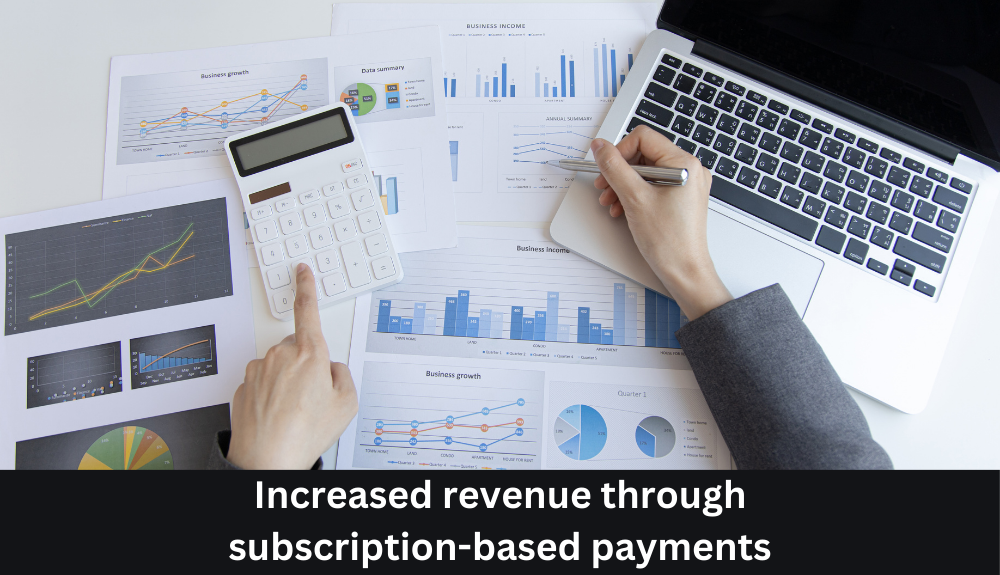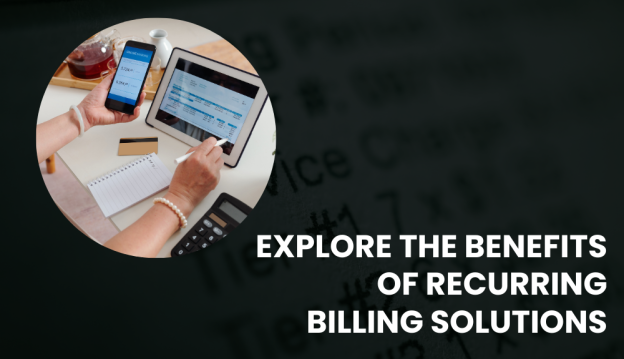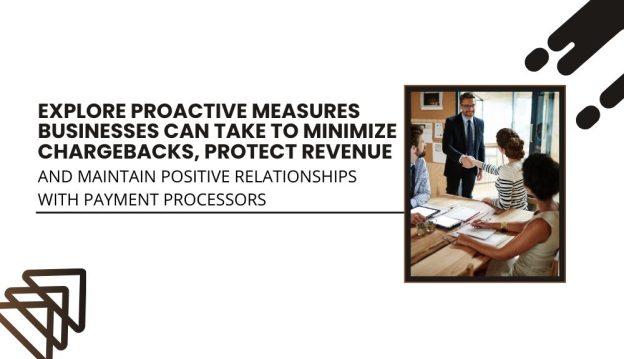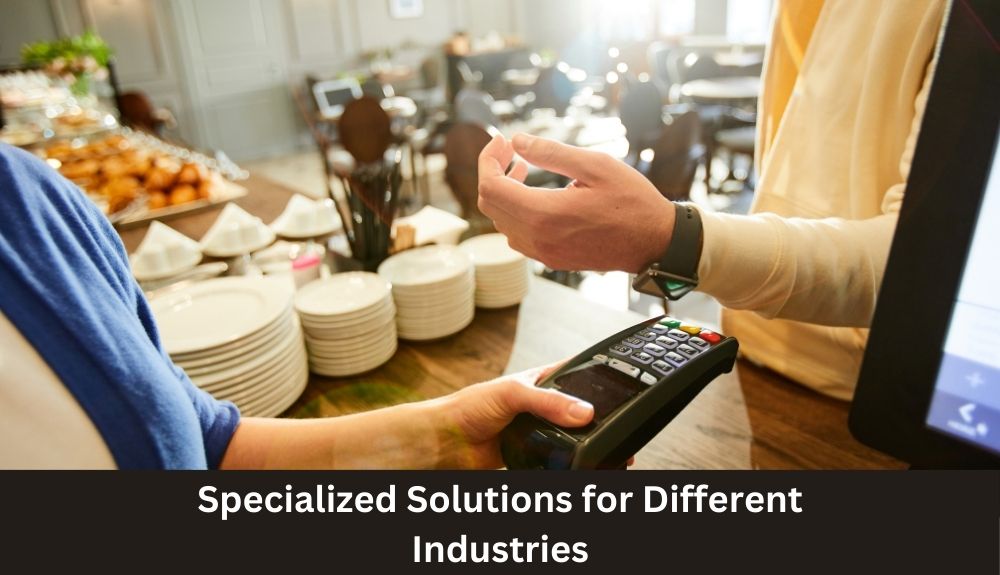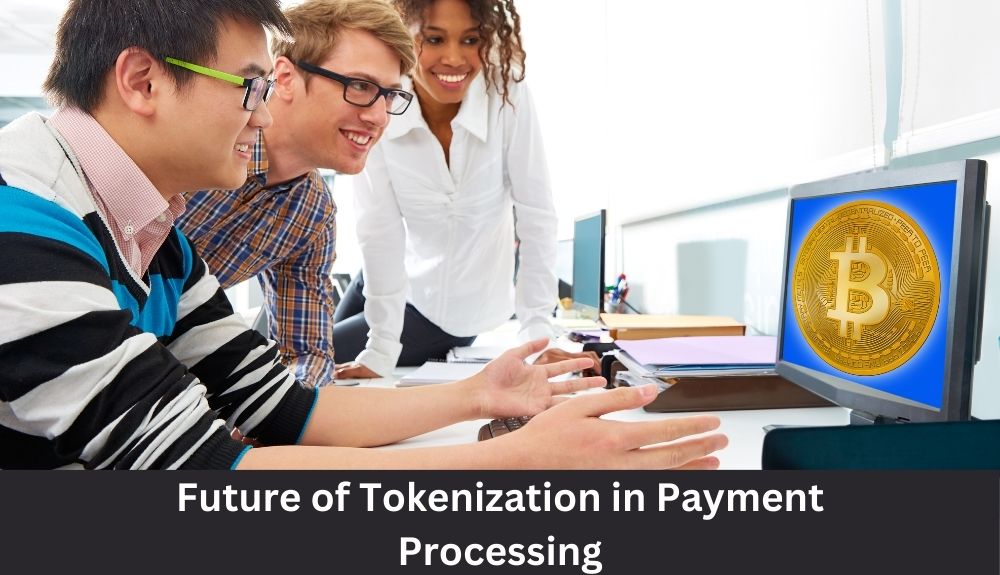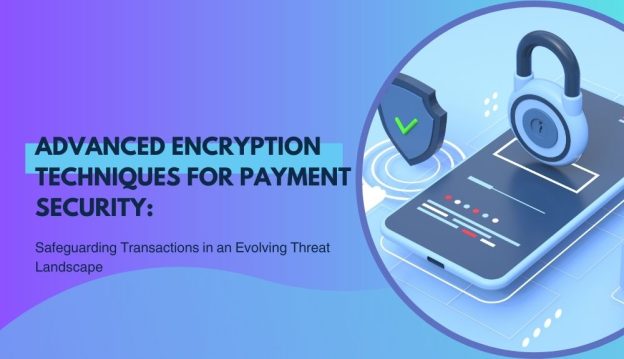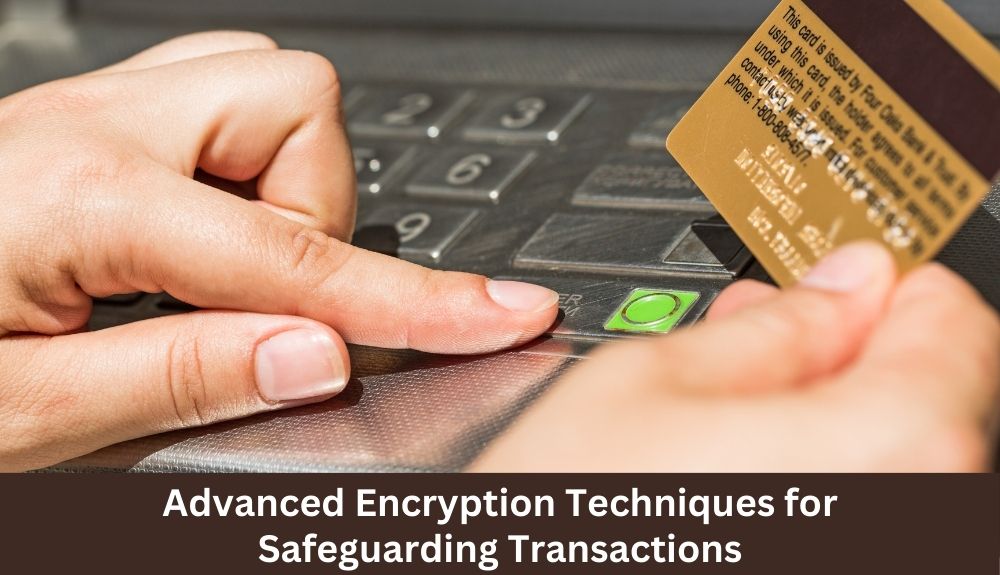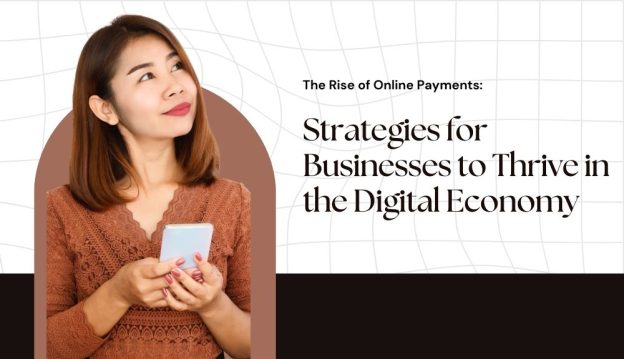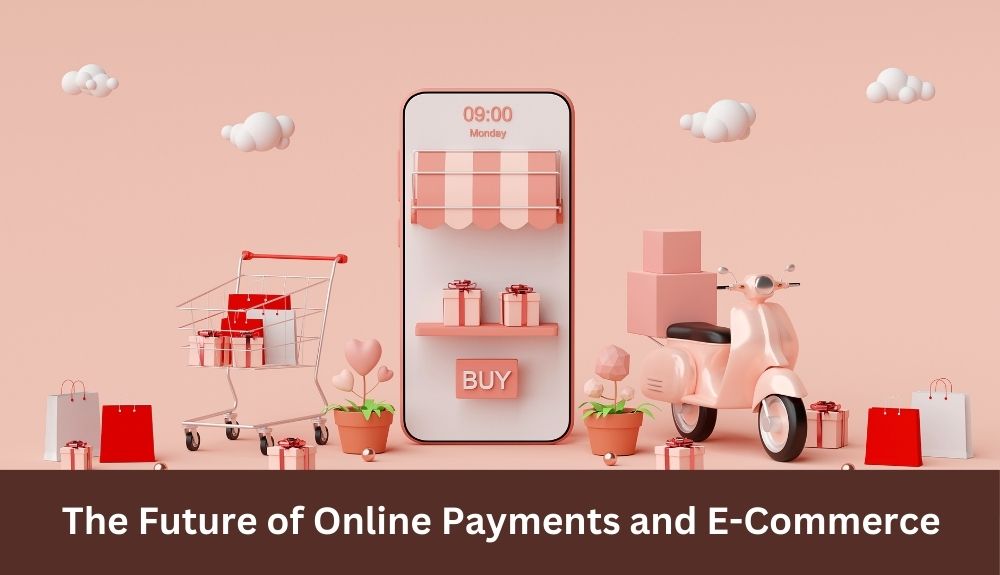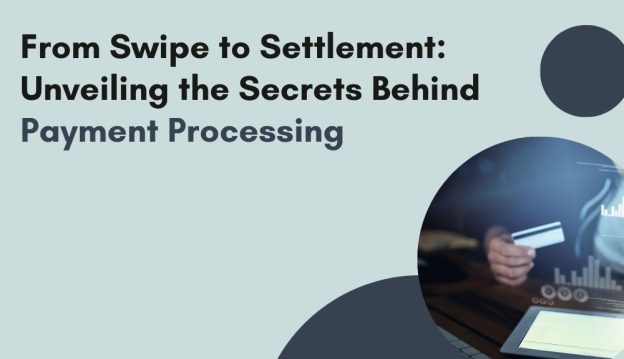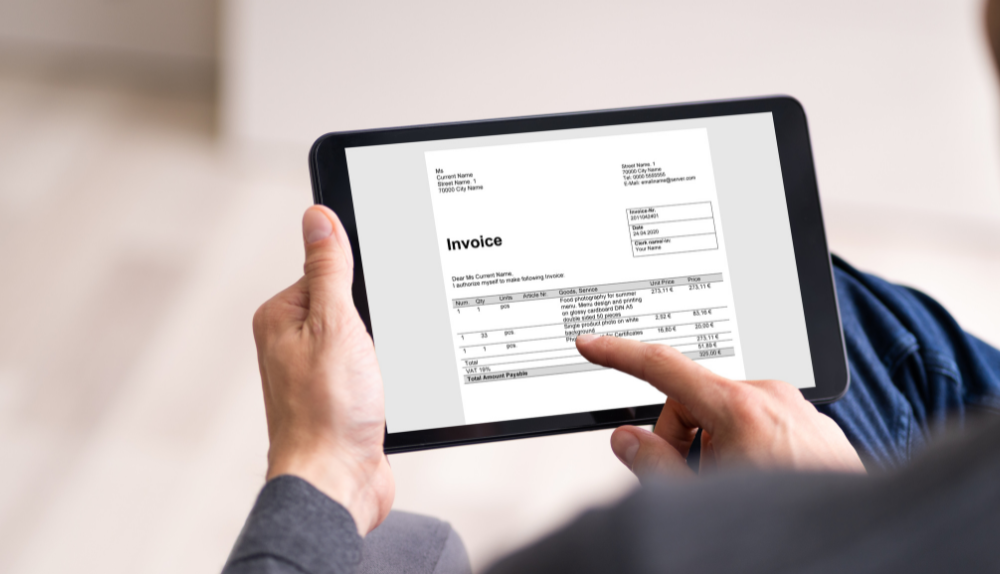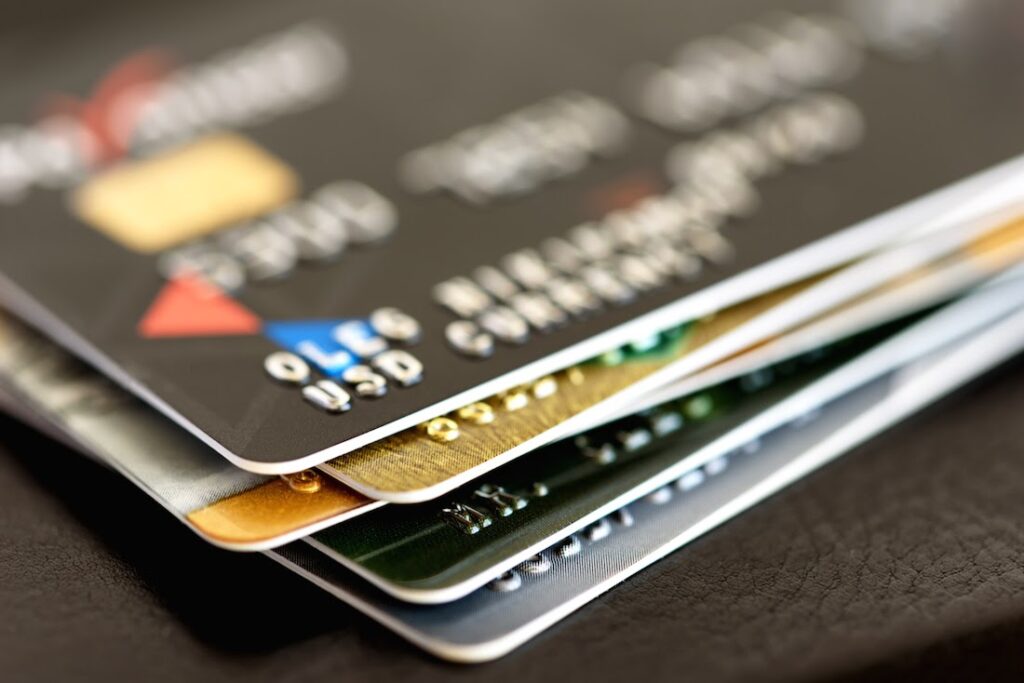Are you curious about the intricate journey your payments go through from the moment you swipe your card to the final settlement? Well, get ready to unveil the secrets behind payment processing in our blog, “From Swipe to Settlement.”
Imagine this scenario: you’re at your favorite neighborhood cafe, eager to enjoy your morning coffee and a delicious pastry. As you make your way to the counter, you confidently swipe your card, and within seconds, the transaction is complete. But have you ever wondered what happens behind the scenes to make this seamless experience possible?
In this informative blog, we dive deep into the world of payment processing, shedding light on the complex steps that take place after you swipe your card. We understand that as a consumer or a business owner, payment processing can sometimes be a perplexing world. That’s why we’re here to simplify it for you.
Throughout the blog, our expert insights will demystify the payment process, covering key topics such as authorization, clearing, and settlement. But that’s not all! We’ll also explore the different players involved in the process, such as acquiring banks, payment gateways, and card networks, ensuring you gain a comprehensive understanding of the entire ecosystem.
1. Introduction to Payment Processing
Payment processing is an essential aspect of modern commerce, ensuring secure and seamless transactions between buyers and sellers. In this section, we will delve into the fundamentals of payment processing, exploring the various stages involved and shedding light on the intricate mechanisms that enable smooth financial transactions.
Understanding the Payment Processing Workflow:
1.1 Authorization:
The first step in the payment processing journey is the authorization of a transaction. When a customer initiates a purchase, the payment information undergoes a series of checks to ensure sufficient funds, validity, and security. This stage involves communication between the merchant, payment gateway, and the issuing bank to validate the transaction.
1.2 Clearing and Settlement:
Once a transaction is authorized, the next phase is clearing and settlement. During this stage, funds are transferred from the customer’s account to the merchant’s account. This process includes the reconciliation of transactions, the calculation of fees, and the transfer of funds through the appropriate payment networks.
1.3 Payment Gateways:
Payment gateways act as intermediaries between the merchant and the acquiring bank. They facilitate the secure transmission of customer payment information and enable real-time authorization and settlement. Popular payment gateways include PayPal, Stripe, and Braintree, each offering different features and integrations.
1.4 Security Measures:
Maintaining the security of transactions is of paramount importance in payment processing. Various security measures, such as encryption, tokenization, and fraud monitoring, are employed to protect sensitive customer data and prevent unauthorized access.
1.5 Payment Methods:
Payment processing supports a wide range of payment methods, including credit cards, debit cards, digital wallets, and bank transfers. Merchants often offer multiple payment options to cater to their customers’ preferences and convenience.
The Benefits of Efficient Payment Processing:
Fast and Reliable Transactions: Efficient payment processing ensures quick and reliable transactions, reducing customer frustration and enhancing their overall shopping experience.
Increased Conversion Rates: A seamless payment process can significantly influence conversion rates as customers are more likely to complete their purchases when the checkout process is hassle-free.
Improved Security: Robust security measures in payment processing protect both customers and merchants from potential fraud or financial risks. This builds trust and enhances the reputation of the business.
Enhanced Financial Management: Streamlined payment processing simplifies financial management for merchants by providing detailed transaction data, facilitating reconciliation, and automating accounting processes.
💡 key Takeaway: Payment processing is a crucial component of modern commerce, involving multiple stages such as authorization, clearing and settlement.
2. The Evolution of Payment Processing Systems
Payment processing systems have come a long way since their inception. They have evolved to meet the ever-changing needs and demands of businesses and consumers alike. In this section, we will delve into the fascinating journey of payment processing systems, from their humble beginnings to the advanced systems we use today.
1. Manual Credit Card Imprinting:
In the early days, payment processing involved a manual process of imprinting credit card details onto carbon copy slips. This method required physical handling of each transaction, making it time-consuming and prone to human error.
2. Electronic Authorization:
With advancements in technology, payment processing systems transitioned to electronic authorization. This innovation revolutionized the industry by allowing transactions to be authorized electronically, reducing the need for physical imprints.
Advantages of Electronic Authorization
Faster transaction processing: Electronic authorization significantly reduced transaction time, making payments quicker and more efficient.
Enhanced security: The use of encrypted networks ensured the protection of sensitive customer information, minimizing the risk of fraud.
Increased transaction volume: Electronic authorization systems paved the way for businesses to handle higher transaction volumes, fueling growth and expansion.
3. Online Payment Gateways:
The rise of the internet gave birth to online payment gateways, transforming the way we make transactions. With the introduction of online gateways, users could securely make payments and conduct e-commerce activities from the comfort of their homes.
Key Features of Online Payment Gateways
Seamless integration: Online payment gateways seamlessly integrate with e-commerce platforms, providing a smooth user experience.
Multiple payment options: Customers have the flexibility to choose from various payment methods, including credit cards, digital wallets, and bank transfers.
Fraud prevention measures: Advanced fraud detection systems help to ensure secure transactions and protect both businesses and customers.
4. Contactless and Mobile Payments:
The recent explosion of contactless and mobile payment options has further transformed the payment processing landscape, revolutionizing the way we pay for goods and services.
Benefits of Contactless and Mobile Payments
Convenience: The ability to make payments simply by tapping a card or using a mobile device has made transactions faster and more convenient.
3. Understanding Payment Gateways
Payment gateways play a crucial role in the seamless and secure transfer of funds during online transactions. In this section, we will delve into the details of payment gateways, their functions, and how they ensure the safe passage of sensitive financial information.
1. What is a Payment Gateway?
A payment gateway is a technology infrastructure that authorizes and facilitates the transfer of funds from a customer’s bank account or credit card to the merchant’s account. It acts as a middleman, securely transmitting the customer’s payment information to the appropriate financial institutions involved in the transaction.
2. How do Payment Gateways Work?
Payment gateways work by encrypting sensitive data such as credit card numbers, ensuring that information remains confidential during transmission. Here’s a step-by-step breakdown of the payment gateway process:
a. Customer Places an Order: The customer selects products or services, enters their payment details, and initiates the transaction on the merchant’s website or app.
b. Data Encryption: When the customer submits their payment information, the payment gateway encrypts it using SSL (Secure Socket Layer) or other encryption methods. This ensures that the data is protected from unauthorized access or interception.
c. Transaction Routing: The encrypted data is then sent to the payment processor, which determines the appropriate financial institution to process the payment. This may include the customer’s bank or credit card network.
d. Authorization and Verification: The payment processor communicates with the relevant financial institution to verify the customer’s payment details and determine if the transaction can be approved. This involves checks for available funds, card validity, and potential fraud indicators.
e. Transaction Approval: Once the payment processor receives authorization, it relays the approval message back to the payment gateway, which in turn notifies the merchant of the successful transaction.
f. Settlement: The final step involves the settlement of funds, where the payment processor transfers the authorized funds from the customer’s bank account or credit card to the merchant’s designated account. This process typically occurs within a few business days, depending on the payment gateway and financial institution involved.
3. Benefits of Payment Gateways
Payment gateways offer several advantages, both for merchants and customers. Here are some notable benefits:
a. Enhanced Security: Payment gateways utilize robust security measures to protect sensitive customer data, reducing the risk of data breaches and fraud.
b. Wide Compatibility: Payment gateways are compatible with various e-commerce platforms and can integrate.
4. The Role of Merchant Account Providers
Merchant account providers play a crucial role in the payment processing ecosystem. They act as intermediaries between businesses and financial institutions, facilitating the smooth transfer of funds from customers’ accounts to merchants’ accounts. Let’s delve deeper into the functions and importance of merchant account providers.
1. Account Setup and Onboarding
Setting up a merchant account can be a complex process, especially for businesses new to payment processing. Merchant account providers simplify this task by guiding businesses through the application and onboarding process. They ensure that all necessary documents and requirements are met, such as business licenses, tax identification numbers, and financial statements. By streamlining the setup procedures, merchant account providers save businesses valuable time and effort.
2. Payment Gateway Integration
A payment gateway is a vital component of online payment processing. It securely transmits transaction data between customers, merchants, acquirers, and banks. Merchant account providers often offer their own payment gateway solutions or work with reputable gateway providers. They assist businesses in integrating the payment gateway into their websites or e-commerce platforms, ensuring seamless payment experiences for customers.
3. Payment Processing Services
Merchant account providers enable businesses to accept various payment methods, including credit cards, debit cards, and alternative payment options like digital wallets. They collaborate with acquiring banks to handle the authorization and settlement of transactions. These providers offer robust processing systems that ensure fast and reliable transaction processing, minimizing the risk of payment failures or delays.
4. Risk Management and Fraud Prevention
In the digital age, fraud prevention is a crucial aspect of payment processing. Merchant account providers employ sophisticated risk management tools and techniques to safeguard businesses and customers against fraudulent activities. They implement fraud detection measures, such as transaction monitoring, address verification, and card authentication, to prevent unauthorized transactions and protect sensitive customer data. By actively managing risks, merchant account providers instill trust in the payment process and protect businesses from financial losses.
5. Reporting and Analytics
Comprehensive reporting and analytics are key to understanding and optimizing payment processes. Merchant account providers offer robust reporting tools that provide businesses with valuable insights into sales, transaction volumes, chargebacks, and other important metrics. With access to such data, businesses can identify patterns, optimize operations, and make informed decisions to enhance customer experiences and drive growth.
💡 key Takeaway: Merchant account providers play a pivotal role in the payment processing landscape. From facilitating account setup to integrating payment gateways, processing transactions, managing risks, and providing insightful reporting, they enable businesses to streamline payment.
5. Different Types of Payment Processing Methods
Payment processing is an essential part of any business that accepts payments from customers. There are various types of payment processing methods available, each with its own advantages and considerations. In this section, we will explore the different types of payment processing methods to help you make informed decisions for your business.
1. Credit and Debit Card Processing:
This method allows businesses to accept payments from customers using their credit or debit cards.
It involves a card reader or a virtual terminal to process payments securely.
Benefits include faster transactions, increased convenience for customers, and easy integration with Point of Sale (POS) systems.
2. Mobile Wallets:
Mobile wallets have gained popularity in recent years as more people use smartphones for their daily activities.
Mobile wallets, such as Apple Pay, Google Pay, or Samsung Pay, allow customers to make contactless payments using their smartphones.
They provide a convenient and secure way to process payments, reducing the need for physical cards.
Advantages of mobile wallets:
Quick and seamless transactions
Enhanced security with biometric authentication
Ability to store multiple payment methods in one place
3. Electronic Funds Transfer (EFT):
EFT is a method that allows for the electronic transfer of funds between bank accounts.
It provides businesses and customers with a reliable, secure, and cost-effective way to process payments.
EFT can be used for various types of transactions, such as recurring payments, direct deposit, or online bill payments.
4. ACH Processing:
ACH (Automated Clearing House) processing is a popular method for businesses that deal with recurring payments, such as monthly subscriptions or installments.
It allows for the transfer of funds between bank accounts using the ACH network.
ACH transactions are efficient, cost-effective, and reduce the risk of fraud.
Key benefits of ACH processing:
Lower transaction costs compared to credit card processing
Timely and automated recurring payments
Improved cash flow management
6. Payment Processing Fees: What You Need to Know
When it comes to payment processing, fees play a crucial role in understanding the overall cost structure and profitability for businesses. In this section, we will dive into the key aspects of payment processing fees and shed light on what you need to know.
Understanding Different Types of Fees
Payment processing fees typically consist of a variety of charges that are incurred during different stages of the transaction process. It’s important to familiarize yourself with these fees to accurately assess the financial impact on your business. Here are some common types of fees you may encounter:
1. Interchange Fees: These fees are charged by the card networks, such as Visa or Mastercard, and are based on a percentage of the transaction value. The interchange fee covers the costs associated with processing and settling the transaction.
2. Assessment Fees: Card networks also charge assessment fees, which are a small percentage of the transaction amount. These fees support the network’s infrastructure and services.
3. Markup Fees: Payment processors, also known as merchant service providers, add their own markup on top of the interchange and assessment fees to cover their costs and generate profit. Markup fees can vary between providers, so it’s essential to compare and negotiate to secure the best rates for your business.
4. Monthly Fees: Some payment processors charge a monthly fee for services like account maintenance, access to reporting tools, or customer support. These fees can vary depending on the provider and the services included.
5. Transaction Fees: Transaction fees are charged for each payment processed. They can be a flat fee per transaction or a percentage of the transaction value.
Reducing Payment Processing Costs
Managing payment processing costs is crucial for businesses aiming to maximize their profitability. Here are a few strategies to consider:
1. Compare Providers: Don’t settle for the first payment processor you come across. Take the time to research and compare different providers. Look for competitive rates, transparent fee structures, and quality customer support.
2. Negotiate Fees: If you’re processing a significant volume of transactions, there’s room for negotiation with payment processors. Leverage your transaction volume to secure lower rates or reduced fees.
3. Optimize Card Acceptance: Certain card types or processing methods may come with lower fees. Explore options like PIN debit transactions or avoiding manual card entry to potentially reduce costs.
4. Monitor Statements: Regularly review your payment processing statements to ensure accuracy and identify any unexpected or questionable charges.
7. Ensuring Payment Security and Fraud Prevention
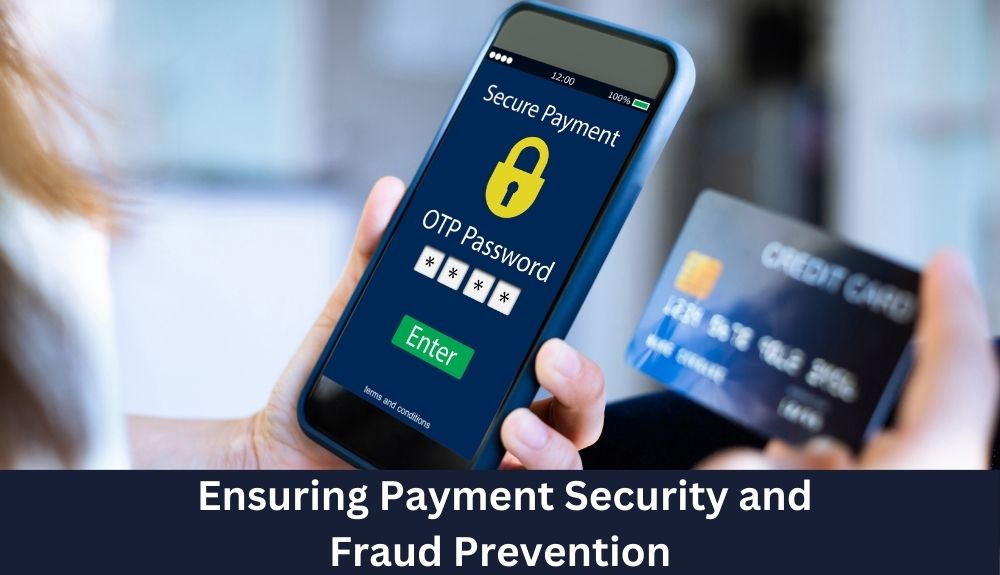
A crucial aspect of the payment processing industry is ensuring payment security and preventing fraud. With the ever-increasing number of online transactions, it has become imperative for businesses to prioritize the implementation of robust security measures. This section will delve into the key strategies and best practices employed by payment processors to protect both merchants and consumers.
1. Encryption and Tokenization
Encryption technology plays a pivotal role in safeguarding sensitive data during payment transactions. By encoding payment information, including credit card details and personal identification numbers (PINs), encryption ensures that the data is unreadable and cannot be easily intercepted by cybercriminals.
Tokenization is another security measure that replaces sensitive data with unique identification symbols called tokens. These tokens are non-sensitive and hold no value to potential hackers, offering an additional layer of protection against data breaches.
2. Two-Factor Authentication
Two-factor authentication (2FA) is a widely adopted security measure that adds an extra layer of verification to the payment process. By requiring users to provide two sets of credentials, such as a password and a unique code sent via SMS or email, 2FA significantly reduces the risk of unauthorized access.
3. Fraud Monitoring and Detection
Payment processors employ advanced fraud monitoring systems to detect suspicious activities and ensure immediate action. These systems analyze various parameters, such as transaction patterns, IP addresses, and transaction velocity, to identify potential fraudulent transactions.
Implementing machine learning algorithms and artificial intelligence techniques further enhances fraud detection capabilities, as these technologies can identify patterns that may indicate fraudulent behavior.
4. Compliance with Payment Card Industry Data Security Standard (PCI DSS)
The Payment Card Industry Data Security Standard (PCI DSS) is a set of comprehensive security requirements that aim to protect cardholder data. Payment processors must adhere to these standards to ensure the secure handling of payment information.
Compliance with PCI DSS includes maintaining secure networks, regularly monitoring and testing systems, and implementing strong access control measures. These practices create a secure environment for processing payments and mitigate the risk of data breaches.
5. Continuous Monitoring and Compliance
Payment processors employ dedicated teams to monitor transactions and identify potential security breaches or vulnerabilities. This proactive approach allows for immediate action to be taken in case of any suspicious activities.
8. The Payment Process: Step by Step
Understanding the payment process is essential for businesses and consumers alike. Whether you’re a buyer making a transaction online or a merchant receiving payments for your products/services, the payment process involves several steps that ensure the secure and efficient transfer of funds. Let’s dive into each step to gain a comprehensive understanding of how payments are processed:
1. Initiation: The payment process begins when a customer decides to make a purchase or pay for a service. This can happen on an e-commerce website, at a physical store, or through a mobile app. The customer selects the desired items and proceeds to checkout.
2. Authorization: Once the customer has provided their payment information, such as credit card details or bank account information, the payment processor or payment gateway (such as PayPal or Stripe) handles the authorization request. The processor verifies the card details, checks for sufficient funds, and ensures that it is not a fraudulent transaction. If everything checks out, the payment is authorized for further processing.
3. Capture: In this step, the payment processor captures the authorized funds from the customer’s account. This happens in real-time or may be initiated by the merchant at a later point, such as when the product is shipped or the service is rendered.
4. Encryption and Transmission: To ensure the security of sensitive financial information, encryption techniques are employed to protect the data during transmission. This helps prevent unauthorized access and safeguards the customer’s data from potential threats.
5. Settlement: Once the payment has been authorized and the funds captured, the transaction needs to be settled. Settlement involves transferring the funds from the customer’s account to the merchant’s account. This process may take a few business days, depending on the payment method and the financial institutions involved.
6. Clearing: Clearing is the process of reconciling and verifying the validity of the payment transaction. It involves confirming that the transaction data is accurate and that all necessary fees and charges are accounted for. This step ensures proper record-keeping and helps identify any discrepancies or errors.
7. Reporting and Reconciliation: Merchants and payment processors generate reports to track all transactions and reconcile them against their records. This helps in monitoring cash flow, identifying potential issues, and maintaining accurate financial records.
8. Risk Management and Fraud Prevention: Throughout the payment process, various measures are in place to mitigate the risk of fraud and protect both the customer and the merchant. Advanced fraud detection systems, transaction monitoring, and identity verification techniques.
9. Payment Processing for Small Businesses
Payment processing is an essential aspect of running a small business. Whether you operate a brick-and-mortar store or an online shop, facilitating smooth and secure transactions is crucial for customer satisfaction and the growth of your business. In this section, we will explore the secrets behind payment processing specifically tailored for small businesses, and discuss the key considerations and options available to successfully handle transactions.
1. Understanding Payment Processing:
Before delving into the intricacies of payment processing, it is important to grasp the basics. Payment processing refers to the handling of electronic transactions, usually involving credit or debit card payments. It involves a series of steps that ensure the funds are transferred securely from the customer’s account to your business account.
2. Choosing the Right Payment Processor:
Selecting the appropriate payment processor is vital for small businesses. Consider the following factors when making your decision:
a) Cost and Fees: Assess the fees associated with each payment processor and evaluate whether they align with your budget.
b) Payment Options: Determine whether the payment processor supports various payment options, such as credit cards, debit cards, digital wallets, or mobile payments, that cater to your customer base.
c) Integration: Check if the payment processor integrates seamlessly with your existing point-of-sale (POS) system or e-commerce platform.
d) Security Measures: Ensure the payment processor prioritizes data security and utilizes advanced encryption and fraud prevention measures to protect sensitive customer information.
e) Customer Support: Look for a payment processor that offers reliable customer support to assist you whenever technical issues or questions arise.
3. Set Up a Merchant Account:
To process payments, you will need a merchant account—a dedicated business bank account that allows you to accept funds from credit and debit card transactions. Contact your bank or a reputable financial institution to set up a merchant account. This account will serve as a holding area for the funds before they are deposited into your main business account.
4. Online Payment Gateways:
For businesses operating online, an online payment gateway is crucial. This software securely authorizes and validates online payment transactions, serving as a virtual point-of-sale terminal. Utilizing a reputable online payment gateway ensures smooth and secure transactions for your customers.
5. Mobile Payment Solutions:
With the rapid advancement of technology and the increasing use of smartphones, leveraging mobile payment solutions can provide your small business with a competitive edge. Consider adopting mobile payment apps or utilizing mobile card readers to accept payments on the go.
10. Payment Processing for E-commerce Businesses
E-commerce businesses rely heavily on efficient payment processing systems to ensure smooth transactions and a seamless shopping experience for their customers. In this section, we will explore the key aspects of payment processing specifically tailored to the needs of e-commerce businesses.
1. Understanding the Payment Process:
Payment Gateway: A payment gateway is a software application that securely connects the e-commerce website to the payment processor. It encrypts the customer’s payment information and facilitates the transfer of funds between the shopper, the merchant, and the acquiring bank.
Payment Processor: The payment processor is responsible for authorizing and processing the transactions between the customer and the merchant. It performs essential functions such as verifying the customer’s payment details, checking for sufficient funds, and transferring the funds from the customer’s account to the merchant’s account.
2. Integration Options:
Hosted Payment Pages: Some e-commerce businesses opt for hosted payment pages provided by the payment processor. This means that when a customer is ready to make the payment, they are redirected to a secure page hosted by the payment processor to enter their payment information.
API Integration: API integration allows businesses to have more control and flexibility over the payment process. It enables them to seamlessly integrate the payment gateway directly into their own website, providing a seamless checkout experience for customers without redirecting them to an external page.
3. Payment Security:
Secure Sockets Layer (SSL) Encryption: SSL encryption ensures that customer payment data is transmitted securely between the web browser and the e-commerce website. It creates a secure connection that safeguards sensitive information from unauthorized access.
Compliance with Payment Card Industry Data Security Standard (PCI DSS): E-commerce businesses must adhere to the PCI DSS requirements to protect cardholder data. Compliance involves implementing strict security measures, including regular security audits, encryption of data at rest, and secure storage of cardholder information.
4. Fraud Prevention Measures:
Address Verification System (AVS): AVS verifies the billing address provided by the customer during the checkout process. It helps identify suspicious transactions by comparing the address entered with the address associated with the credit card.
Card Verification Value (CVV): CVV is the three-digit code on the back of a credit card. Requesting the CVV during the payment process adds an extra layer of security, as it verifies that the customer has physical possession of the card.
11. The Future of Payment Processing
As technology continues to evolve at an unprecedented pace, the future of payment processing holds immense promise for businesses and consumers alike. Let’s explore some of the exciting advancements on the horizon that are set to revolutionize the way we make transactions.
1. Contactless Payments: With the rise of mobile wallets and contactless payment solutions, the need for physical credit cards may soon become a thing of the past. Tap-and-go transactions using Near Field Communication (NFC) technology are becoming increasingly popular, offering convenience and speed at the checkout counter.
2. Biometrics Authentication: As concerns for security and fraud prevention grow, biometric authentication methods are gaining traction in the payment industry. Fingerprint recognition, facial recognition, and even iris scanning are being integrated into payment systems, providing a seamless and highly secure way to verify transactions.
3. Internet of Things (IoT) Integration: The interconnectedness of devices within the Internet of Things (IoT) opens up new possibilities for payment processing. Imagine making a purchase directly from your smart fridge or wearable device, without needing to manually enter any payment information. The IoT is bridging the gap between physical and digital commerce, enabling frictionless transactions.
4. Blockchain Technology: The decentralized nature of blockchain technology has the potential to disrupt traditional payment processing systems. Blockchain enables secure, transparent, and traceable transactions, eliminating intermediaries and reducing costs. Cryptocurrencies, a byproduct of blockchain technology, also have the potential to redefine how we transact globally.
5. Artificial Intelligence (AI) and Machine Learning: AI-powered algorithms can analyze vast amounts of payment data to identify patterns, detect anomalies, and prevent fraud. Machine learning models can continuously improve risk management and enhance customer experience by personalizing payment recommendations and reducing false positives in fraud detection.
6. Voice Commerce: With the rise of voice assistants like Amazon’s Alexa and Google Assistant, voice commerce is poised to revolutionize online shopping experiences. Imagine simply instructing your virtual assistant to make a payment on your behalf, eliminating the need for manual input and simplifying the checkout process.
7. Enhanced Data Security Measures: The growing concern over cybersecurity calls for stronger security measures in payment processing. Tokenization, encryption, and multi-factor authentication methods are continuously evolving to protect sensitive customer information.
💡 key Takeaway: The future of payment processing is undergoing a dynamic transformation. From contactless payments and biometrics authentication to blockchain technology and voice commerce, emerging advancements are reshaping the way we transact.
12. Choosing the Right Payment Processor for Your Business
When it comes to running a successful business, choosing the right payment processor is crucial. With the variety of options available in today’s market, it can be overwhelming to determine which one is the best fit for your business needs. In this section, we will explore key factors to consider when selecting a payment processor, ensuring a seamless and secure payment experience for both you and your customers.
1. Evaluate your business requirements:
Consider your transaction volume: Determine the average number of transactions your business processes per month to find a payment processor that can handle the volume efficiently.
Analyze your industry: Certain industries have specific payment processing needs, such as high-risk merchants or businesses that require recurring billing. Look for a payment processor with expertise in your industry.
Understand your target audience: If your customers prefer specific payment methods or currencies, choose a payment processor that supports those options.
2. Assess the fees and pricing structure:
Compare pricing models: Different payment processors have varying fee structures, including transaction fees, monthly fees, and chargeback fees. Understand these fees and determine which model aligns with your business volume and budget.
Consider additional costs: Some payment processors may charge additional fees for services like PCI compliance or integration with your existing systems. Evaluate these potential costs to avoid unexpected surprises.
3. Examine payment security:
Ensure PCI compliance: Payment Card Industry Data Security Standard (PCI DSS) compliance is essential to safeguarding customer payment information. Confirm that the payment processor follows strict security measures to protect sensitive data.
Research fraud prevention tools: Look for payment processors that offer advanced fraud detection and prevention tools to minimize the risk of fraudulent transactions.
4. Evaluate integration and customization options:
Determine integration requirements: If you have an existing e-commerce platform or point-of-sale system, check if the payment processor integrates seamlessly with your current setup.
Look for customization options: Depending on your business needs, you may require specific features such as recurring billing, subscription management, or mobile payment capabilities. Find a payment processor that offers these customization options.
5. Consider customer support and reliability:
Evaluate customer service: Prompt and efficient customer support is crucial for addressing any issues or concerns that may arise during the payment process. Look for a payment processor with reliable customer support channels.
Assess uptime and reliability: Downtime can disrupt your business operations and lead to potential revenue loss. Research the payment processor’s uptime track record and ensure they have backup systems.
13. Common Challenges in Payment Processing and How to Overcome Them
Payment processing is a critical aspect of any business that accepts digital transactions. However, it is not without its share of challenges. In this section, we will explore some of the common obstacles that merchants face in payment processing and provide effective strategies to overcome them.
1. Security Threats and Fraud Prevention
Implement robust fraud prevention tools and protocols.
Stay updated about the latest security standards and compliance regulations.
Regularly monitor transactions for any suspicious activities.
Enable two-factor authentication and encryption technologies.
Educate employees and customers about security best practices.
2. Payment Gateway Integration
Choose a reliable payment gateway provider that aligns with your business needs.
Ensure seamless integration of the payment gateway with your website or app.
Test the payment gateway thoroughly before going live.
Offer multiple payment options to accommodate various customer preferences.
3. Chargebacks and Disputes
Maintain transparent and easy-to-understand refund policies.
Respond promptly to customer queries and complaints.
Keep thorough records of all transactions and communication.
Implement a robust system for analyzing and resolving disputes.
Continuously monitor chargeback ratios and take preventive measures.
4. Payment Declines and Failed Transactions
Optimize your payment gateway settings to reduce false declines.
Offer clear instructions and troubleshooting steps for customers.
Provide alternative payment methods for customers facing issues.
Monitor transaction success rates and analyze patterns to identify and resolve any technical issues.
5. Regulatory Compliance
Stay informed about the specific regulations and compliance requirements for your industry and region.
Regularly review and update privacy policies and terms of service.
Implement necessary data protection measures to ensure customer information security.
Conduct periodic internal audits to ensure adherence to compliance standards.
💡 key Takeaway: Overcoming common challenges in payment processing requires a combination of proactive measures and strategic planning. By prioritizing security, integrating the right payment gateway, effectively handling disputes, addressing payment declined, and ensuring regulatory compliance, businesses can streamline their payment processes and provide a smoother transaction experience for their customers.
14. Best Practices for Streamlining Payment Processing
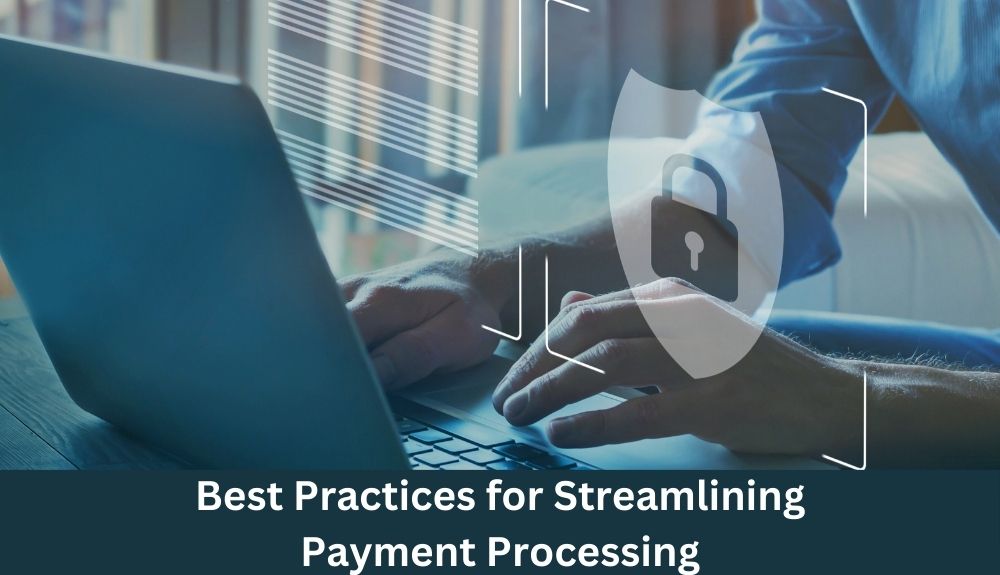
Managing payment processing efficiently is crucial for businesses of all types and sizes. By following best practices, you can streamline your payment processes, optimize cash flow, and provide a seamless experience for your customers. Here are some key strategies to consider:
1. Invest in Secure Payment Gateways: To ensure the safety of sensitive customer data, it’s essential to use secure payment gateways that employ encryption technologies. Look for reputable providers that offer robust fraud detection and prevention measures.
2. Accept Multiple Payment Methods: Cater to the preferences of your customers by offering a variety of payment options. This could include credit and debit cards, digital wallets, bank transfers, and even cryptocurrencies. By providing flexibility, you can boost customer satisfaction and capture a wider audience.
3. Simplify the Checkout Process: Keep the checkout process as simple and user-friendly as possible. Avoid lengthy forms and unnecessary steps that can frustrate customers and lead to cart abandonment. Implementing one-click checkout options and pre-filled information can significantly enhance the user experience.
4. Optimize for Mobile: With the increasing popularity of mobile payments, it’s crucial to ensure your payment processes are mobile-friendly. Ensure that your website or application is responsive and optimized for smaller screens. Implement features such as mobile wallets, QR code scanning, and seamless integrations with popular payment apps.
5. Automate Recurring Payments: If your business involves recurring payments, such as subscriptions or memberships, automating the process can save time and resources. Set up automated billing and reminders to minimize manual intervention and reduce the risk of late payments.
6. Implement Real-Time Reporting and Analytics: Gain valuable insights into your payment processes by leveraging real-time reporting and analytics tools. Monitor transaction trends, identify bottlenecks, and track key performance indicators to optimize your payment ecosystem.
7. Maintain Compliance with Payment Regulations: Stay up to date with relevant payment regulations and compliance standards. Ensure that your systems and processes adhere to industry-specific regulations such as PCI DSS (Payment Card Industry Data Security Standard) to protect both your business and your customers.
💡 key Takeaway: By implementing best practices such as investing in secure payment gateways, accepting multiple payment methods, simplifying the checkout process, optimizing for mobile, automating recurring payments, utilizing real-time reporting and analytics, and maintaining compliance with payment regulations, businesses can streamline their payment processing and improve the overall customer experience.
15. Payment Processing Regulations and Compliance
Payment processing involves the handling of sensitive financial information, and as such, it is subject to various regulations and compliance requirements. Understanding these regulations is crucial for businesses and payment service providers (PSPs) to operate legally and securely. In this section, we will delve into the key payment processing regulations and compliance standards that businesses need to adhere to.
I. PCI DSS (Payment Card Industry Data Security Standard)
a. The PCI DSS is a set of security standards developed by major credit card companies to ensure the protection of cardholder data during payment transactions.
b. Compliance with PCI DSS is required for all entities that process, store, or transmit credit card information.
c. Key requirements of PCI DSS include maintaining a secure network, protecting cardholder data, regularly monitoring and testing systems, and implementing strong access control measures.
II. AML (Anti-Money Laundering) Regulations
a. AML regulations aim to prevent the use of financial systems for money laundering and other illicit activities.
b. Businesses involved in payment processing must implement robust measures to identify, detect, and report suspicious transactions.
c. These measures include conducting customer due diligence, ongoing monitoring, and reporting of suspicious activities to the relevant authorities.
III. KYC (Know Your Customer) Requirements
a. KYC regulations require businesses to verify the identity of their customers before engaging in financial transactions.
b. Payment processors are responsible for implementing effective KYC procedures to ensure the legitimacy of each customer.
c. Adequate KYC measures may include verifying customer identification documents, obtaining proof of address, and conducting risk assessments.
IV. GDPR (General Data Protection Regulation)
a. GDPR is a regulation that governs data protection and privacy for individuals within the European Union.
b. In the context of payment processing, GDPR compliance is essential to protect the personal information of customers.
c. Payment processors must ensure transparent data handling practices, obtain explicit consent for data processing, and provide individuals with rights over their personal data.
Conclusion
In conclusion, payment processing is a critical aspect of any online business, and understanding how it works can make a significant difference in your success. We have uncovered the secrets behind payment processing, from the initial swipe to the final settlement. This knowledge will empower you to make informed decisions and optimize your payment systems for greater efficiency and customer satisfaction. With technology evolving at a rapid pace, it is crucial to stay up to date with the latest trends and advancements in payment processing. By adopting new tools and strategies, you can enhance transaction security, speed up processing times, and reduce payment disputes. This ultimately leads to a more seamless and enjoyable experience for your customers, bolstering your brand reputation and building customer loyalty. Don’t let payment processing be a daunting task.
